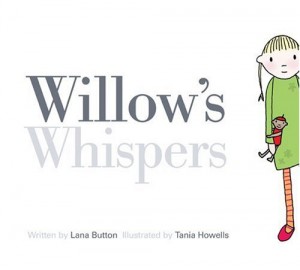I will never not ever eat a Tomato
Story … Narrative … Imaginative … Creative … |
|||
| Book Title/Cover | Story/Resource Overview | Objective | Lesson Links & Black Line Masters |
 |
You are going to love this book by Bethany Barton! I sure did! Spiders can be difficult to love, but the more you know about them and the more humour that surrounds them, the more chance there is for an attraction to emerge! | Where do I begin? In this lessons, there are suggestions for outdoor learning, art, inquiry, spider research, a maker activity, checking out emotions, and lots of fun! | Writing Trait: Ideas & Voice
|
 |
Baby ducklings do things in their own time and learn to fly just like the others … and maybe even farther. | In this lesson, students are invited to think about the ways in which ducklings and children are alike. Can examining germinating seeds provide another example of how things grow at different rates and speeds? | Writing Trait: Ideas and drawing with details
Ruby Flew Too … documentation of learning
|
 |
This is a story of a boy who loved the stars so much, he decided to catch one of his very own. | Students use maker materials to try to catch a star. | Writing Trait: Ideas & Voice |
 |
This is another incredibly creative book by Herve Tullet. Your students will laugh and marvel at these delightful pages. | Watch the creativity of your students as they draw pictures on a piece of paper that a large hole in it! | Writing Trait: Ideas & Voice |
 |
Bear see colours everywhere. Children are invited to see colours in their world too! | In this lesson students are invited to play with colour and begin to write colour words. Images from Pintrest are used as inspiration for playful ideas. | Writing Trait: Ideas |
 |
Wee Can Write is a professional resource filled with lessons for emergent writers. Activities, based on renowned picture books, are arranged with a seasonal theme. Each featured book offers trait-based mini-lessons. | This resource, presented in a teacher-friendly format, provides clear explanation of the traits at an emergent level. Use it to establish a common trait-based language in our kindergarten classrooms while teaching important foundational skills. | |
 |
On Flo’s first day of preschool, her lunch bucket is lost … And creative Bob knows just how to use it! | After reading this book to your students, share a bucket or two. Encourage students to copy Bob’s bucket-using ideas. Maybe they can think like Bob and be inventive while they play! | Writing Trait: Ideas |
 |
Max and Ruby are baking cakes for Grandma’s birthday. While Ruby sends Max on errands to make up for his misadventures in the kitchen, Max puzzles over how to make sure the grocer gives him that extra special ingredient for his cake. | Help emergent writers to better understand the ways in which they can get ideas down on paper to convey their message. | Writing Trait: Ideas |
 |
This beautifully illustrated book uses poetic language to describe the special features of the month of November, in both natural and domestic settings. | Repeat this lesson monthly to collect formative assessment about the progression of student writing skills. Create a class book, use in portfolios or as individual student writing samples. | Writing Trait: Ideas
In November Lesson |
 |
Use play in centres as the vehicle for representation. | Writing Trait: Ideas | |
 |
Cameron Girard does everything he can to destroy the ugly sweater that Grandma knit for him. But as Grandma describes what all the colours mean, Cameron has a change of heart. | Long before kindergarten students are able to write stories of their own, they are able to talk about basic story elements like problem and solution. To prepare for future story writing, students will discuss the problem and solution framework of this story. | Writing Trait: Ideas and Organization
The Truly Terrible Horrible Sweater SomebodyWantedButSo
|
 |
Charlie is babysitting Lola and must get her to eat some not-so-favourite foods. How will he manage that? | In this lesson link, students will continue to examine the problem and solution relationstionship.
|
Writing Trait: Ideas and Organization |
 |
Willow wants to be heard, but her tiny voice means that she is often left out. Does Willow find her voice? Read this delightful book to find out what happens. | Read Willow’s dialogue in a whisper and have a conversation about the voice trait. A SWBS graphic organizer will be used and filled out by the teacher, with lots of discussion by students, to determine this story’s problem and solution. This activity helps to lay a foundation for clear ideas in future story writing. | Writing Trait: Ideas and Organization |
 |
Frog wants to fly, but flying is a bird thing. When frog rescues a baby bird, flying just might become a frog thing too! | The first page of this book provides the ‘somebody, wanted and but’ parts to the story. The remaining pages provide the ‘so’ or solution. In this lesson, kindergarten students will discuss the SWBS framework on a more independent basis. Can small groups of children do this on their own? It’s the gradual release of responsibility model. | Writing Trait: Ideas |
 |
All the Dandelions are disappearing quickly, but Christopher Nibble finds one. Will he gobble it up quickly before others find it? This book has a heartwarming theme. | And yet another lovely book to determine importance. What is the problem in this story? What’s the solution? | Writing Trait: Ideas |
